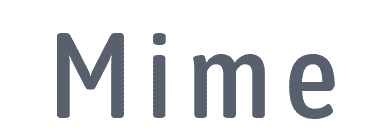Sayurbox Redesigns the Packaging to Prevent Plastic Waste
Share

A startup providing online shopping services for fresh groceries, Sayurbox, is running a campaign to reduce waste in its operations. One of them is by redesigning packaging to reduce plastic waste.
The Co-Founder and CEO of Sayurbox, Amanda Susanti, said that the change in the design of the Sayurbox packaging so that it could be further utilized by consumers.
“So that the family can use it again to play, for example, there is a coloring box, snakes and ladders, arranging houses and others. Especially when we are all from home, so we also support activities at home,” he said in a virtual webinar, Friday (9/7/2021).
From what it looks like, it looks like a regular cardboard box with an ornate image as a guide for cutting and further use.
Thus, the waste generated from operations run by Sayurbox is less than normal operations. This step is also included in an effort to reduce the carbon footprint of the waste produced.

Pressing Carbon Footprint
Furthermore, Amanda explained about the carbon footprint. In general operations, with a long distribution chain, it results in a high carbon footprint, ranging from 30 to 50 percent.
“That’s because, at various points, food waste will always arise. This is what we are pressing,” he said.
Meanwhile, for the distribution chain run by Sayurbox, Amanda claims to produce only 5 percent of the carbon footprint of the total raw materials distributed.
“Currently we are also trying to reduce our carbon footprint from 5 percent to 2 percent this year,” he said.
That includes the practice of reducing the distribution chain. Thus, the point or post for stopping raw materials will be shorter and less waste will be generated.

Take Advantage of All Results
The main factor that increases the amount of waste is raw materials that are not used. For example, fruits or vegetables of low quality in a distribution that would generally not be used.
Meanwhile, at Sayurbox, all agricultural products from various categories are utilized. Starting from grade A to grade D. “We take everything, and sell it in the application in the product imperfect category,” said Amanda.
He added, his efforts are based on consumers who like transparency. In addition, as an effort to reduce food waste and be able to be distributed to consumers.
For information, until now Sayurbox has collaborated with 1,000 vegetable and fruit farmers in West Java and East Java.
The startup, which was founded in 2017, is also dominated by women, with 57 percent of its employees being women, while the rest are men.

Interested in IPO in the Future
Sayurbox, an e-commerce product of fresh vegetables, fruits, various meats, seafood, and other products, has a long-term plan to be listed on the Indonesia Stock Exchange (IDX) through an initial public offering (IPO) scheme.
This plan has become a big dream for the Sayurbox team as startup companies are ready to enter the capital market, including recently PT Bukalapak.com which has made an official public presentation on its IPO this Friday (9/7/2021).
Besides that, there is also GoTo, a joint entity of Gojek and Tokopedia, which is planning an IPO this year. Amanda Susanti said that the IPO is one of Sayurbox’s long-term dreams and goals.
In addition to expanding services, Sayurbox is also trying to develop a network of farmers. Now they already have 1,000 partner farmers spread across a number of areas. Not only in Jabodetabek, but delivery services also penetrated Bali and Surabaya.
“Our dream in 2021 covers all regions in Indonesia. So that we can bring goodness to all people in Indonesia,” concluded Amanda. Currently, the expansion of Sayurbox is supported by a number of investors, including PT Astra International Tbk (ASII).




















